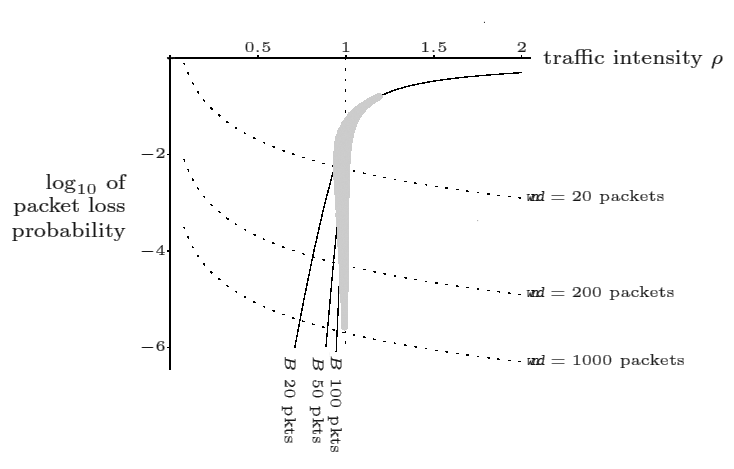
wnd for each flow,
and the buffer size B at the link, the intersection of the
wnd and B lines shows the operating point,
measured in terms of utilization (i.e. traffic intensity) and packet
loss probability.
We study the behaviour of these fluid models (on a single bottleneck link, for a collection of identical long-lived flows). For what parameter regimes is the fluid model stable, and when it is unstable what is the size of oscillations and the impact on goodput? Our analysis is based on an extension of the Poincaré-Linstedt method to delay-differential equations.
We find that large buffers with drop-tail have much the same performance as intermediate buffers with either drop-tail or AQM; that large buffers with RED are better at least for window sizes less than 20 packets; and that small buffers with either drop-tail or AQM are best over a wide range of window sizes, though the buffer size must be chosen carefully. This suggests that buffer sizes should be much much smaller than is currently recommended.

wnd for each flow,
and the buffer size B at the link, the intersection of the
wnd and B lines shows the operating point,
measured in terms of utilization (i.e. traffic intensity) and packet
loss probability.